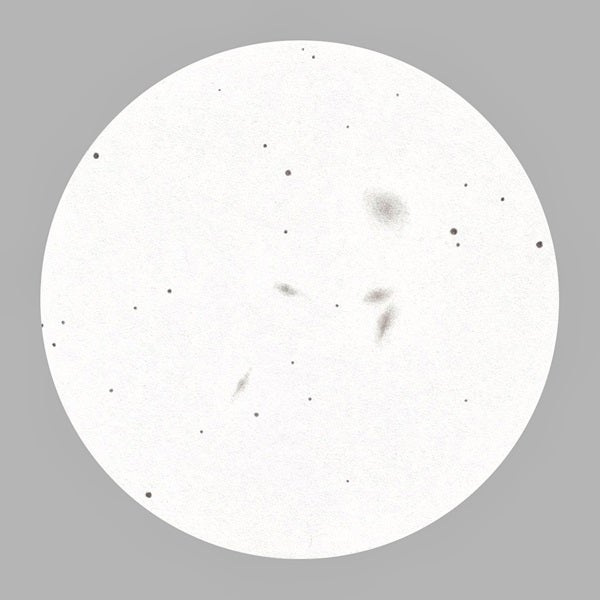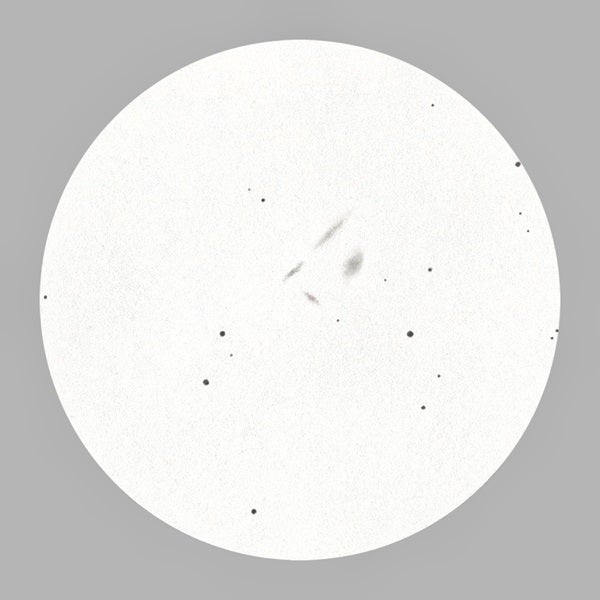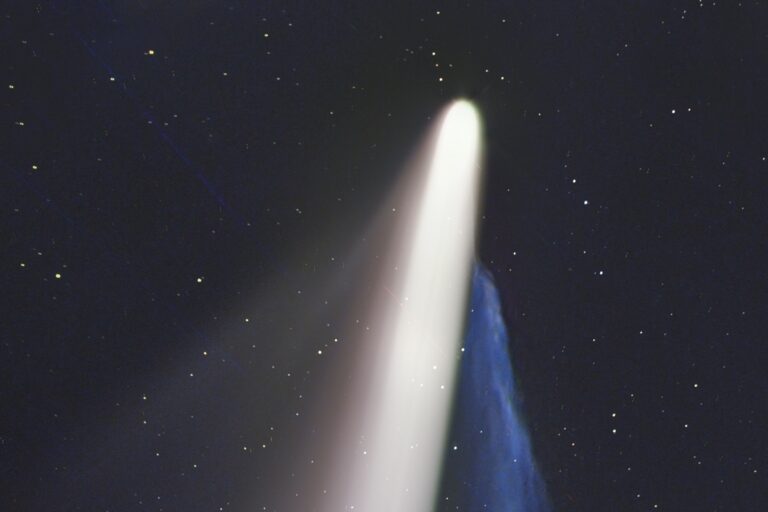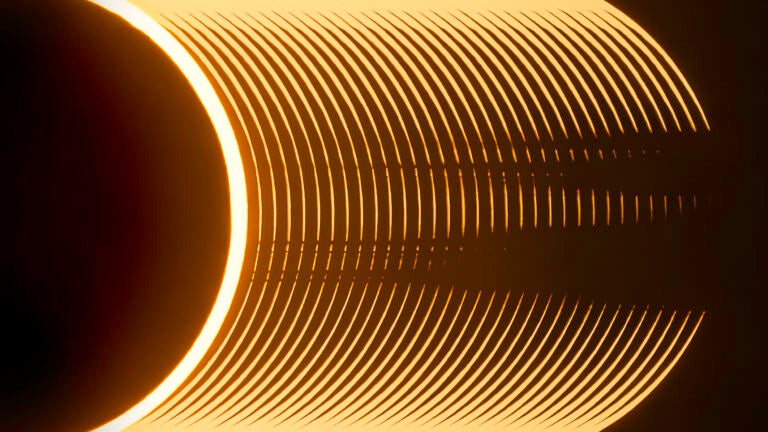He based each group’s inclusion on its population, surface density, and isolation from other galaxies. While these gravitationally bound gems offer researchers opportunities to study galactic evolution, they also provide captivating views for backyard observers with large scopes.
For me, the real fun begins during the sketching process. The brightest members of any group are the easiest to spot, so the challenge is to locate and identify as many of the others as possible. At that point, we can study their unique shapes and draw them within the star field. I’ll break down the process with two sketches. The first shows Hickson 68, a tight, five-member group near the eastern border of the constellation Canes Venatici.
The largest of the family is NGC 5350 (68C), which glows at magnitude 11.3 and measures 3.2′ by 2.3′. The star field also features a beautiful magnitude 6.5 orange star lying farther to the southwest. NGC 5355 (68D) and NGC 5358 (68E) are the faintest, with magnitudes 13.1 and 13.9, respectively. As a bonus, you’ll be treated to magnitude 10.6 NGC 5371, a conspicuous galaxy that lies 0.5° northeast of the group.
Notice how I placed the brightest stars near the edge of my sketch. I added those first and used them as markers so that when the star field drifted out of view, I could nudge the telescope back to the exact location.
Once I completed the star field, I tackled the galaxies by marking their locations on the sketch with the tip of a blending stump that I lightly covered in graphite. Then, starting with the brightest of the group, I worked my way outward from its core to build its structure with the blending stump, lightening the pressure as I proceeded to create diffuse edges. Because each subsequent galaxy became fainter, I had to use averted vision to tease out their ghostly details.
Unfortunately, few stars were near the field’s edge for framing. So instead, I used an imaginary crosshair. Two bright stars floated just below the horizontal line and each a third of the way into the field of view from the western and eastern edges. This placed a moderately bright star at the 2 o’clock position, a double star at 3 o’clock, and a faint star at 9 o’clock. Once I had the stars in their places, I used the blending stump to draw NGC 4174 because it was conveniently placed in the center of the crosshairs. I then included the remaining family members by cross-referencing their positions with other stars or to my imaginary clock face.
Questions or comments? Contact me at erikarix1@gmail.com.












